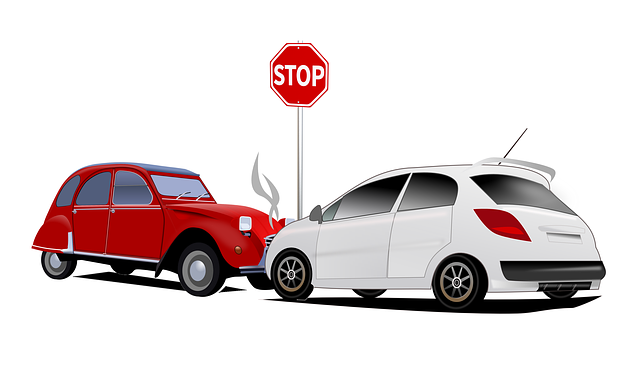Leasing a car has become an increasingly popular alternative to buying, offering lower monthly payments, the chance to drive newer models, and less long-term commitment. Unlike purchasing a vehicle outright, leasing allows you to essentially rent the car for a set period, typically 2-4 years, with the option to return it or buy it at the end. This can be ideal for those who enjoy upgrading to the latest technology and safety features without the hassle of resale. However, car leasing comes with its own set of rules and potential pitfalls that can turn a smart financial move into a costly regret. Many people enter leases without fully understanding the terms, leading to unexpected fees, higher overall costs, and frustration.
In this guide, we’ll break down the top 10 mistakes to avoid when leasing a car, drawing from expert advice and common consumer experiences. By steering clear of these errors, you can secure a better deal, save money, and enjoy a smoother leasing process. Whether you’re a first-time leaser or looking to refine your approach, these tips will help you navigate the dealership with confidence. We’ll use clear explanations, bullet points for key takeaways, and even a comparison table to make the information easy to digest. Remember, knowledge is power—researching thoroughly can prevent thousands in unnecessary expenses.
Mistake 1: Not Negotiating the Price of the Car
One of the biggest car leasing mistakes is assuming the sticker price is non-negotiable. The capitalized cost (cap cost), which is essentially the price the lease is based on, can often be haggled down just like when buying a car. Failing to negotiate means you’re paying more over the lease term through higher monthly payments or upfront fees.
Why is this a mistake? Dealers often start with the manufacturer’s suggested retail price (MSRP), but market conditions, inventory levels, and competition allow room for discounts. Not pushing for a lower cap cost can add hundreds to your total outlay. For instance, reducing the cap cost by $1,000 on a 36-month lease might lower your payments by around $28 per month.
How to avoid it:
- Research the car’s fair market value using tools like Kelley Blue Book or Edmunds.
- Get quotes from multiple dealers to leverage competition.
- Focus on the cap cost reduction before discussing monthly payments.
By negotiating effectively, you ensure the lease reflects the true value, not inflated dealer profits. This simple step can save significant money without much effort.
(Word count so far: approx. 150)
Mistake 2: Ignoring Residual Value
Residual value—the estimated worth of the car at the end of the lease—is a key factor in determining your payments, yet many lessees overlook it. A higher residual value means lower depreciation costs passed on to you, resulting in cheaper monthly rates.
This oversight is costly because leases are calculated by subtracting the residual from the cap cost and dividing by the term length, plus fees. Choosing a car with poor residual value, like one that depreciates quickly, inflates your payments. For example, luxury sedans often have lower residuals than reliable SUVs.
To dodge this:
- Compare residuals for different models; aim for vehicles with 50-60% retention after three years.
- Check manufacturer data or lease calculators online.
- Opt for brands known for strong residuals, such as Toyota or Honda.
Understanding residual value helps you select a vehicle that aligns with budget-friendly leasing. It’s a behind-the-scenes element that directly impacts your wallet.
Mistake 3: Focusing Solely on Monthly Payments
It’s tempting to zero in on low monthly payments advertised by dealers, but this ignores the bigger picture, including upfront costs, fees, and total lease expense. This mistake often leads to overpaying overall.
Why it hurts: Dealers can manipulate payments by extending terms or adding hidden charges, making the deal seem affordable while the total cost balloons. A $299/month lease might require $3,000 down, plus taxes and fees, equaling more than buying in some cases.
Avoidance strategies:
- Calculate total cost: (Monthly payment x months) + down payment + fees.
- Use online lease calculators to compare scenarios.
- Prioritize the “money factor” (interest rate equivalent) for transparency.
By looking beyond the monthly figure, you ensure the lease fits your long-term finances.
Mistake 4: Not Knowing Your Credit Score
Entering a dealership without checking your credit score is like going in blind—your score heavily influences lease approval, terms, and rates. Poor credit can mean higher money factors or denial.
This error is common because many assume their score is fine, only to face surprises. A score below 680 might add 1-2% to effective interest, increasing costs by hundreds.
Tips to prevent:
- Pull your free credit report from AnnualCreditReport.com.
- Improve your score by paying down debt before applying.
- Shop lenders if dealership financing isn’t optimal.
Knowledge of your credit empowers better negotiations and deals.
Mistake 5: Not Shopping Around for Deals
Sticking to one dealership limits your options, as lease deals vary by location, promotions, and inventory. Not comparing can mean missing manufacturer incentives or better terms.
The issue: Local demand affects pricing; a popular model might be cheaper elsewhere. Skipping this step could cost you $50-100 per month.
How to shop smart:
- Get online quotes from at least three dealers.
- Use sites like Cars.com or TrueCar for comparisons.
- Consider national lease brokers for broader access.
Competition drives down prices—use it to your advantage.
Mistake 6: Underestimating Your Mileage Needs
Leases come with annual mileage caps, often 10,000-15,000 miles. Guessing low leads to hefty overage fees, typically 15-30 cents per mile.
Why it’s problematic: Excess miles add up quickly; 5,000 extra miles at 25 cents equals $1,250. Underestimating disrupts budgeting.
Avoid by:
- Tracking your current driving habits for a month.
- Adding a buffer for unexpected trips.
- Negotiating higher limits upfront, even if it raises payments slightly.
Accurate mileage estimation keeps costs predictable.
Mistake 7: Skipping GAP Insurance
Gap insurance covers the difference between what you owe on the lease and the car’s actual value if totaled or stolen. Many skip it, thinking standard insurance suffices.
This can be disastrous: New cars depreciate fast; without gap, you pay the shortfall out-of-pocket, potentially thousands.
Prevention:
- Check if it’s included in the lease; if not, add it for $20-30/month.
- Compare dealer vs. independent providers.
- Always opt in for peace of mind.
It’s a small cost for major protection.
Mistake 8: Not Reading the Fine Print
Lease contracts are dense with terms on fees, penalties, and obligations. Skimming them can hide surprises like disposition fees or early termination costs.
Consequence: Unexpected charges at lease-end or mid-term. For example, missing wear-and-tear clauses leads to repair bills.
To steer clear:
- Read every page; ask for clarifications.
- Highlight key sections like mileage, maintenance, and buyout options.
- Consult a trusted advisor if needed.
Thorough review prevents regrets.
Mistake 9: Putting Too Much Money Down
Large down payments reduce monthly costs but tie up cash that could be invested elsewhere. Plus, if the car is totaled early, that money is lost.
Why avoid: It doesn’t build equity like buying; better to minimize upfront for liquidity.
Strategies:
- Aim for zero-down leases if possible.
- Use trade-ins instead of cash.
- Calculate if the reduction justifies the risk.
Keep your money working for you.
Mistake 10: Neglecting Vehicle Maintenance
Leased cars must be returned in good condition, or you’ll face wear-and-tear fees. Ignoring upkeep like oil changes or dent repairs amplifies end-of-lease costs.
Issue: Dealers charge for excess damage; poor maintenance can void warranties too.
Avoid with:
- Follow the manufacturer’s service schedule.
- Document all maintenance.
- Pre-inspect before return and fix issues affordably.
Proper care ensures a fee-free handover.
Leasing vs. Buying: A Quick Comparison Table
To help decide if leasing is right, here’s a table comparing key aspects:
| Aspect | Leasing | Buying |
| Ownership | No; return at end | Yes; keep or sell |
| Monthly Cost | Lower typically | Higher, but builds equity |
| Mileage Limits | Strict caps | Unlimited |
| Customization | Limited | Full freedom |
| End of Term | Return or buyout | Own outright |
| Best For | Frequent upgraders | Long-term keepers |
This table highlights why avoiding mistakes is crucial for leasers.
Conclusion
Avoiding these top 10 mistakes when leasing a car can transform a potentially stressful experience into a savvy financial decision. From negotiating prices to maintaining the vehicle, each step requires attention to detail and research. By using bullets for tips, tables for comparisons, and clear headings, we’ve made this guide user-friendly and SEO-optimized for searches like “car leasing tips” or “avoid leasing pitfalls.” Ultimately, consult professionals and crunch the numbers to ensure leasing aligns with your lifestyle. Happy driving!










